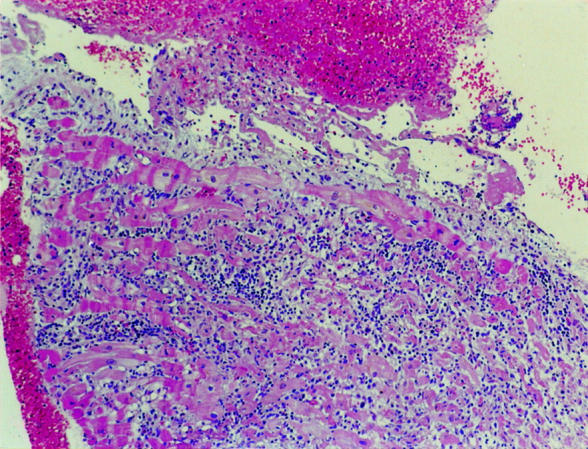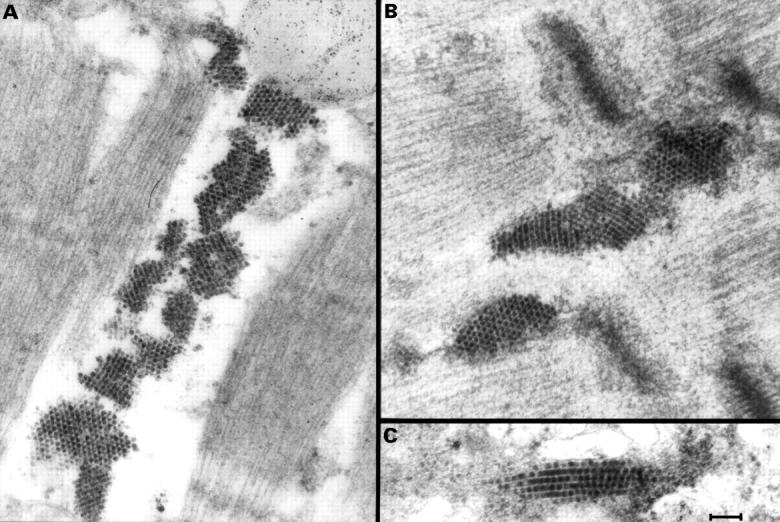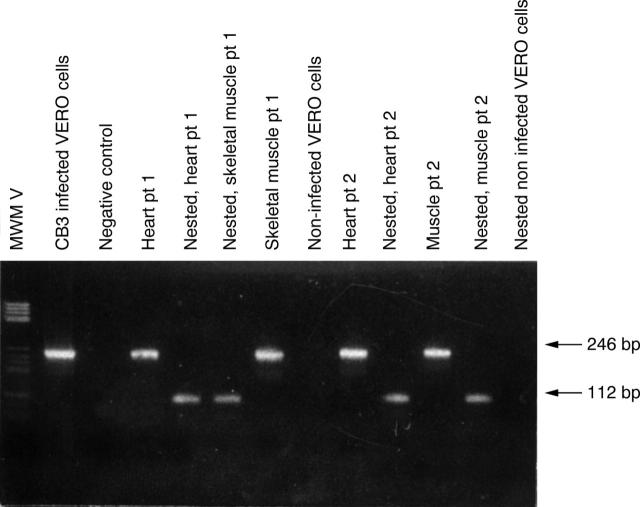Abstract
Enteroviral RNA detection in myocarditis and dilated cardiomyopathy is rare. Enteroviral particles and RNA have recently been identified in patient's skeletal muscle, suggesting that skeletal more than heart muscle hosts the virus in chronic infection. Enteroviral RNA and virus-like particles were found in the myocardium and in the skeletal muscle of two patients with fatal myocarditis: a 39 year old man who died five days after the onset of febrile flu; and a 49 year old woman, assisted for 50 days with a left ventricular assist device, who then died from cerebral haemorrhage. Automated sequencing, alignment, and sequence comparison confirmed the enteroviral origin of polymerase chain reaction products and excluded contamination. These findings agree with prior observations of enteroviral localisation in the skeletal muscle of patients with dilated cardiomyopathy, and further support the hypothesis that skeletal rather than heart muscle may host the virus and serve as a reservoir in cardiomyopathies related to chronic infection. Keywords: enterovirus; myocarditis; viral particles; skeletal muscle
Full Text
The Full Text of this article is available as a PDF (130.3 KB).
Figure 1 .

Low power view of the myocarditis diagnosed at necropsy in patient 1. Haematoxylin and eosin stain × 80.
Figure 2 .

Electron micrographs showing viral crystalline arrays in the skeletal muscle of: (A) patient 1; (B) patient 2; and (C) coxsackie B3 infected VERO cells. Uranyl acetate and lead citrate (bar scale 0.25 µm).
Figure 3 .
Reverse transcription PCR products from: coxsackie B3 (CB3) infected VERO cells (lane 1); negative control (lane 2); patient 1, heart and relative nested assay (lanes 3 and 4) and skeletal muscle (lanes 5 and 6, nested is in lane 5); non-infected VERO cells; PCR product external primers (lane 7); patient 2 heart and relative nested assay (lanes 8 and 9) and skeletal muscle (lanes 10 and 11); nested reaction from non-infected VERO cells (lane 12). MWM, molecular weight marker.



